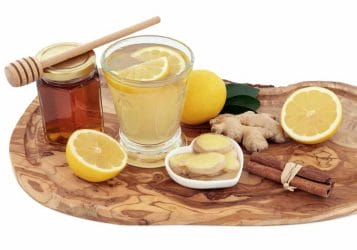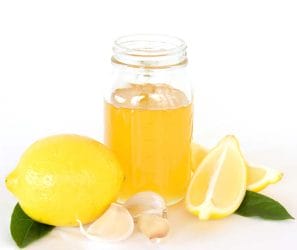
Home remedies for colds – you can do without visiting the doctor
A cold is an ailment that can affect anyone, regardless of age, gender or even season. Its most common cause is a viral infection and its symptoms are extremely bothersome. Untreated cold ends up with serious complications, sometimes even life-threatening. When we notice the first alarming symptoms in ourselves, we immediately run to the doctor. However our mothers and grandmothers had a different approach to it, knowing how effective are home remedies for a cold. Whole generations of our compatriots were cured in this way, so nothing stands in the way to do the same, avoiding burdening the stomach and the whole digestive system with pills. Positive effects of home remedies will be felt by the whole body, which will return the favor with physical and mental well-being .
Contents
- 1 Home remedies for the common cold – what are the causes of this disease?
- 2 Home remedies for the common cold – how the infection occurs
- 3 Who is most vulnerable to the common cold and how long they pose a risk to others
- 4 Characteristic symptoms of the disease
- 5 Home remedies for the common cold – how to cope with it on your own
- 5.1 Rest and lying in bed for several days
- 5.2 Drinking large amounts of hot liquids
- 5.3 Ginger, invariably the best for a cold
- 5.4 Introducing garlic and onions into the diet
- 5.5 Regularly gargle with medicinal solutions
- 5.6 Inhalation with essential oils and air humidification
- 5.7 Herbs and plants from home medicine cabinet
Home remedies for the common cold – what are the causes of this disease?
Although a cold may catch us even in summer months, we are most exposed to it in autumn and winter. This is due to unfavourable weather conditions, high humidity and low temperatures which weaken the body’s immunity. This opens the way to various infections, including viral ones. Meeting a person infected with one of the viruses causing a cold, we have to reckon with the infection as soon as such a person coughs or sneezes violently.
Home remedies for the common cold – how the infection occurs
When a person coughs or sneezes, viruses begin to spread through droplets, floating in the air along with secretions from the mouth or nose. Sometimes they settle on everyday objects that are shared in the household, where they survive for several hours and can thus also spread to a previously healthy person. One sneeze causes a miniature explosion of viral particles, which in tens of thousands can travel several metres. There are many types of viruses responsible for the onset of cold symptoms, and the most common are caused by:
- rhinovirus, affecting nearly 80 percent of cases of the disease;
- coronavirus, responsible for about 15 percent of cases, and this group includes COVID – 19, with which all of humanity is currently struggling;
- other viruses, also accounting for about 15 percent of cases, such as adenoviruses, so-called para-influenza viruses or adenoviruses.
Who is most vulnerable to the common cold and how long they pose a risk to others

The common cold is one of the most common seasonal diseases that are difficult to avoid, especially for people who do not pay much attention to their health. Negligence, such as improper diet resulting in overweight and obesity, vitamin deficiencies or lack of physical activity, all reduce the efficiency of our immune system very quickly. People who do not lead active but typically sedentary lifestyles and do not leave the house too often are simply unstressed and practically any contact with a sick person may end up in a progressive infection.
Unfortunately, the common cold is a disease that takes an increasing toll every year, although it is difficult to provide accurate statistics of the incidence. Most of the sick do not go to the doctor, treating themselves with home remedies and with extremely high effectiveness. A characteristic feature of this viral infection is its initial, asymptomatic course, and the first visible symptoms of colds appear on average after 2 days. Once we start feeling them, we also start posing a threat to other people, infecting them, depending on the course of the disease, for a period from 5 to even 14 days. This also happens when we feel well ourselves, so it is better to limit contact with other people during this time.
Characteristic symptoms of the disease
As with any disease, also with a cold we should go to the doctor, who will examine us, making a proper diagnosis and assigning appropriate medications to remove all symptoms. However if they are not yet too intense, we are able to recognize them on our own, using popular guides, which without a problem can be found, for example, in the Internet. Someone could accuse us at this point that we promote the principle “Pole, treat yourself“, urging to look for unverified information in the network.
Fortunately there are professional medical websites, e.g. of medical universities or producers of popular specifics used in treating a cold. All of its symptoms are described accurately and reliably, the most visible and noticeable ones, which are particularly painful and usually appear 1 – 2 days after infection. In further treatment, it is also important to distinguish cold from flu, an even more dangerous disease with a different course and possible complications.
The most common symptoms of the common cold are:
- feeling tired, apathy and unwillingness to do anything;
- scratching in the throat gradually turning into pain, heralding a developing respiratory tract infection;
- cough, initially dry but which may progress to a wet cough with copious amounts of secretions;
- blocked nose, runny nose manifested by thick nasal discharge and troublesome sneezing;
- absence of high temperature, except for a slight fever
- headache of relatively slight intensity.
Symptoms indicating that we are sick with flu, however:
- rapid development of the disease, which is immediately accompanied by all symptoms;
- very high fever, which may even exceed 40 degrees;
- a feeling of intense confusion;
- chills;
- severe headache, joint and muscle pain.
Home remedies for the common cold – how to cope with it on your own

If our symptoms are not typical flu ones and we do not have high fever, it is worth trying to get rid of a cold on our own first, treating it at home and using what nature has given us. Of course we are not negating the action of medicines used to treat this disease, but many of them can be replaced by natural treatments, achieving the same effectiveness, but without the risk of side effects. Let’s trust the intuition of our grandmothers, who after all did not have such access to medicines as today, and perfectly coped with rapid alleviation of all symptoms of a cold. They used simple but proven and tested methods, which undoubtedly are:
Rest and lying in bed for several days
It is said jokingly that an untreated cold and flu lasts a week and a treated one lasts seven days. However, the fact is the recommendation not to leave the house for the entire duration of the disease, protecting yourself from deterioration of health and complications, and bystanders from the possibility of infection. Symptoms of a cold are so bothersome that most sick people have to go to bed for a few days, and the proverbial warming up significantly speeds up the process of getting back to full strength.
Drinking large amounts of hot liquids
Of course, we do not mean large amounts of black coffee, but drinks that not only warm us up, but also help in the treatment. You can drink healthy green tea or yerba mate that has the same effect, but better choice will be tea with honey and lemon, not only that it warms up perfectly, but in addition it provides the body with large doses of vitamin C. If someone does not like lemon, it can be replaced by raspberry juice, but only the natural one, not full of artificial dyes and sugars.
Ginger, invariably the best for a cold

Its effectiveness on the common cold cannot be denied, it is always excellent in removing all its symptoms, which is due to its numerous health-promoting properties, but we are talking only about the root, not the already grated form used in the kitchen. Ginger, as another recommended addition to hot tea, acts antiviral, antibacterial, facilitates expectoration, fights troublesome cough, quickly lowers fever, has in its composition a lot of valuable nutrients:
- the mentioned vitamin C, or ascorbic acid;
- B vitamins: B1 (thiamine), B2 (riboflavin);
- essential oils;
- minerals: iron, calcium, phosphorus and potassium.
Introducing garlic and onions into the diet
Many people are already bitter at the very thought of having to eat garlic, even though they accept it in other dishes without much trouble. But it’s worth persuading yourself, because not without a reason, it is considered a natural antibiotic that can cope with not only a cold or a sore throat. It strengthens weakened immunity, also acts anti-inflammatory, antifungal and removes from the body threatening parasites. Just like ginger, it has a lot of nutrients, vitamins and minerals in its composition.
As for how to use it to treat a cold, unfortunately, it’s best to just eat the peeled cloves raw to experience their full health benefits. A good idea is to slice garlic on a sandwich, which will help to soften its taste a bit, you can also add a crushed clove to milk with honey, or make garlic syrup. To do this, pour hot water with ½ cup of honey, add fresh lemon juice, sliced 3 – 4 cloves of garlic and drink 2 teaspoons twice a day, morning and evening.
Onion syrup works similarly to garlic, but we think it would be even harder to convince anyone to use it. However, if you want to try it, onion juice can be used as another base for making a medicinal syrup with honey and lemon.
Regularly gargle with medicinal solutions
This is another method to get rid of one of the worst symptoms, a sore throat, also clogged with secretions flowing from a blocked nose. The throat can be gargled, among others, with the solution of water and salt, preparing the mixture in the proportion of 1 tablespoon of salt to a glass of boiled water. For this purpose, mixtures with hydrogen peroxide or baking soda are also used, but a better solution will be solutions with the addition of herbs. They are commonly used to treat the common cold, thyme and sage work best in this role.
Inhalation with essential oils and air humidification
The most troublesome ailment accompanying this disease is a clogged nose, making normal breathing difficult. The most effective method of unclogging it is inhalation, that is, inhalation of hot water vapor with the addition of essential oils that have antibacterial properties and facilitate expectoration, eucalyptus, lavender, sandalwood or tea. It is equally important to maintain appropriate humidity in the apartment and if you do not have a professional humidifier, you can hang wet towels or special containers filled with water on the radiators. Water, evaporating, will moisten the room and at the same time our dry mucous membranes.
Herbs and plants from home medicine cabinet
Although most diseases are treated with the help of medicines bought without a prescription or assigned by a doctor, everyone should have a set of herbs in their home medicine cabinet which are also useful in case of a cold. According to specialists, it must include:
- dried linden flowers, a definite number 1 in relieving symptoms, and an infusion made of them effectively reduces fever, having an effect similar to acetylsalicylic acid, also helps clear the airways. Lime blossoms contain large amounts of vitamin C which is beneficial in strengthening immunity, and it is best to make an infusion of it to drink or use as one of the ingredients for inhalation;
- Echinacea, exceptionally effective in case of viral infections and it can also be counted among natural antibiotics. Its purple variety improves the functioning of the immune system, stimulating the body to fight cold and flu viruses. It reduces nasal discharge, decongests the nose, reduces headaches, restoring well-being faster;
- elderberry, which owes its healing properties to the presence of phenolic acids, bioflavonoids, vitamins A and C and numerous mineral components. They are responsible for anti-inflammatory, inflammatory, antipyretic and analgesic properties, which are the most important in the fight against cold;
- Rose hips have the highest content of easily assimilable vitamin C. Even citrus fruits such as lemons or grapefruits cannot compare to it. That is why rose hips are recommended for flu and cold conditions, quickly removing their most troublesome symptoms. As an antioxidant it eliminates free radicals, thus strengthening natural immunity, it also contributes to regulating digestion, the basis for fighting overweight, cures acne, calms and improves mood;
- Viola tricolor, better known as pansy, also used in colds, fevers and flu. Its components intensify the action of ascorbic acid, facilitate expectoration by increasing mucus secretion, and help to thoroughly clear infected bronchi.
Sources:
- https://www.healthline.com/health/cold-flu/how-to-get-rid-of-a-cold-fast
- https://www.healthline.com/health/cold-flu/how-long-does-a-cold-last
- https://www.healthline.com/health/life-cycle-of-the-common-cold



